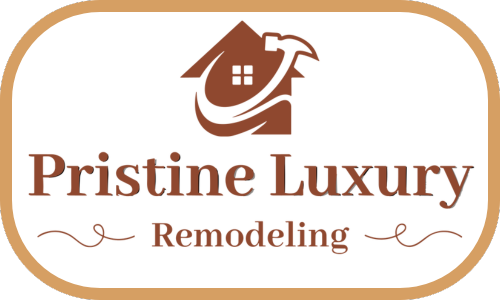Painting is a crucial aspect of home remodeling that can significantly impact the aesthetics and value of your property. However, knowing when to prime before painting and when to skip this step can save you time, money, and effort. In Prosper, TX, where the climate and local conditions can affect painting projects, understanding the nuances of priming is essential for achieving the best results.
Priming before painting is necessary for porous surfaces, drastic color changes, stain coverage, and glossy surfaces. Skipping primer is acceptable for well-prepared, previously painted surfaces in good condition.
Understanding Primer
What is Primer
Primer is a preparatory coating applied before painting to ensure better adhesion of paint to the surface, increase paint durability, and provide additional protection for the material being painted. It creates a smooth, even base, allowing the topcoat to adhere more effectively and reducing the number of paint coats needed for full coverage. Primers also help seal porous surfaces, prevent stains from bleeding through the paint, and improve the overall finish. Whether working on drywall, wood, metal, or previously painted surfaces, using the right primer can significantly enhance the longevity and appearance of your paint job.
Types of Primers
Oil-Based Primers are ideal for wood and surfaces with stains, offering excellent adhesion and durability. They are especially effective in sealing tannins and preventing bleed-through from wood knots and other stains. Water-Based Primers are versatile and suitable for drywall and general use, providing a smooth base for latex paints while being easier to clean up with soap and water. Shellac Primers are excellent for blocking tough stains and odors, making them a go-to choice for smoke damage, water stains, and sealing in smells from pets or mildew. Choosing the right primer depends on the surface and the specific needs of your project.
Benefits of Using Primer
Primer plays a crucial role in the painting process by enhancing paint adhesion, which helps the paint bond more effectively to the surface, resulting in a longer-lasting and more durable finish. It also creates a uniform surface by filling in small imperfections, allowing the paint to go on more smoothly and evenly. Additionally, primer is essential for blocking stains and preventing bleed-through, especially on surfaces that have been previously painted or are prone to discoloration, such as walls with water damage or smoke stains. This ensures that the final paint color appears vibrant and consistent, without any underlying marks showing through.
When to Prime Before Painting
Porous Surfaces
Certain surfaces like new drywall, bare wood, and masonry require priming to achieve the best paint finish. New drywall, being porous, tends to absorb paint unevenly, so applying a primer helps seal the surface and create a uniform base for the paint. Bare wood also needs priming to prevent the paint from soaking into the wood fibers, which can lead to an uneven appearance and reduce the paint’s durability. For masonry surfaces like concrete and brick, primer enhances paint adhesion and helps protect against moisture, ensuring the paint adheres properly and lasts longer on these rough and porous materials.
Drastic Color Changes
When transitioning from dark to light colors, applying a primer is essential as it helps cover the dark base, reducing the number of paint coats needed to achieve the desired light shade. Similarly, when painting over light colors with darker ones, primer ensures even coverage and accurate color representation, preventing the underlying color from affecting the final result. For bright and bold colors, priming the surface is equally important, as it helps achieve a vibrant and consistent finish, allowing the true intensity of the color to shine through without requiring multiple layers of paint.
Stain Coverage
Water stains can be challenging to cover with regular paint, but applying a primer effectively blocks these stains from bleeding through, ensuring a smooth and clean finish. Smoke damage, which often leaves persistent stains and odors, requires specialized primers that seal both the discoloration and the odor, preventing them from affecting the new paint layer. Additionally, ink and crayon marks on walls can be stubborn, but a good primer will prevent these marks from showing through the paint, creating a flawless surface for your final coat.
When to Skip Priming
Previously Painted Surfaces
If the existing paint is in good condition, you might be able to skip priming altogether, saving time and effort. When repainting with the same color, primer may not be necessary as the new paint can adhere well to the old layer. Additionally, if the surface has been properly cleaned, sanded, and is free from any imperfections, it can often forgo the priming step, allowing you to proceed directly to painting for a smooth, professional finish.
Modern Paint Formulas
Self-priming paints combine paint and primer in one, simplifying the painting process by eliminating the need for a separate primer coat. This can save time, especially for smaller projects or when painting over similar colors. High-quality paints also offer better adhesion and coverage, often reducing or even eliminating the need for a primer, particularly on well-prepared surfaces. Using these products can streamline the painting process while still ensuring a durable and professional-looking finish.
Small Projects
Touch-ups on well-maintained surfaces can often be done without the need for primer, especially if the original paint is in good condition. When it comes to smaller furniture pieces, chalk or milk paint can typically be applied without a primer, making the process quicker and more convenient. Similarly, decorative items such as picture frames and small decor pieces generally do not require priming, as their surfaces are not subject to heavy wear and tear. Skipping primer in these cases can save time while still achieving a satisfactory result.
Choosing the Right Primer
Surface Type
For new drywall, applying a water-based primer is essential as it seals the porous surface, ensuring a smooth and even base for subsequent paint layers. Wood surfaces, on the other hand, are best primed with oil-based primers, which provide superior adhesion and prevent the paint from soaking into the wood unevenly. When dealing with metal surfaces, it’s crucial to use rust-inhibiting primers, which protect against rust and corrosion while promoting better adhesion and durability of the paint. This tailored approach ensures that each surface type receives the appropriate treatment for a high-quality, long-lasting finish.
Specific Needs
For specific challenges like stains, select primers that are designed to block those issues effectively. For example, stain-blocking primers are formulated to cover and seal stains, preventing them from bleeding through the paint. If you’re dealing with persistent odors, shellac-based primers are a good choice as they are particularly effective at sealing and neutralizing unpleasant smells. When working with glossy surfaces, use high-adhesion primers to ensure that the paint adheres properly. These primers create a rougher surface that improves the bond between the paint and the glossy material, leading to a more durable and even finish.
Environmental Considerations
For indoor projects, choose low VOC (volatile organic compounds) primers to minimize harmful fumes and improve air quality. These primers are designed to be more environmentally friendly while still providing effective coverage and adhesion. For exterior projects, particularly in areas with harsh weather conditions, select primers that are formulated to withstand the elements. These weather-resistant primers offer enhanced durability and protection against moisture, temperature fluctuations, and other environmental factors, ensuring a longer-lasting finish on outdoor surfaces.
Answering Common Questions
Q1 Do I always need to prime before painting?
A1 No, priming is necessary for porous surfaces, drastic color changes, stain coverage, and glossy surfaces. It can be skipped for well-prepared, previously painted surfaces in good condition.
Q2 Can I use paint with built-in primer?
A2 Yes, self-priming paints are suitable for many projects, but separate primers may still be needed for specific situations like stain blocking or porous surfaces.
Q3 How many coats of primer do I need?
A3 Typically, one coat of primer is sufficient, but additional coats may be needed for stain blocking or very porous surfaces.
The Impact of Climate on Painting
The climate in Prosper, TX, can affect painting projects. High humidity and temperature fluctuations can impact drying times and paint adhesion. Using the right primer and allowing adequate drying time is crucial for achieving the best results.
Seeking Expert Advice
For complex projects or if you’re unsure about the need for primer, it’s always best to seek professional advice. Pristine Luxury Remodeling offers expert guidance and services to ensure your painting project in Prosper, TX, is a success.
Conclusion
Understanding when to prime before painting and when to skip this step is crucial for achieving a high-quality, long-lasting finish. In Prosper, TX, where climate conditions can impact painting projects, proper preparation and the use of the right products are essential. Priming is necessary for porous surfaces, drastic color changes, stain coverage, and glossy surfaces, while it can be skipped for well-prepared, previously painted surfaces in good condition. By following these guidelines and seeking professional advice when needed, you can ensure your painting project is a success, enhancing the beauty and value of your home.
Visit us at Pristine Luxury Remodeling
For more information and personalized guidance visit us at Pristine Luxury Remodeling, We specialize in providing exceptional remodeling services that elevate your space into a masterpiece of luxury.







